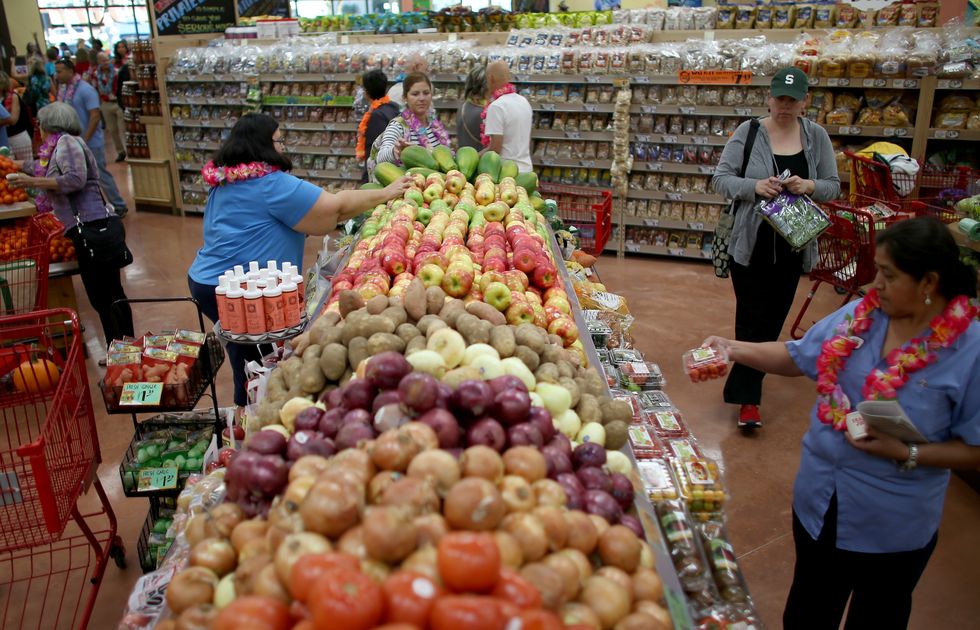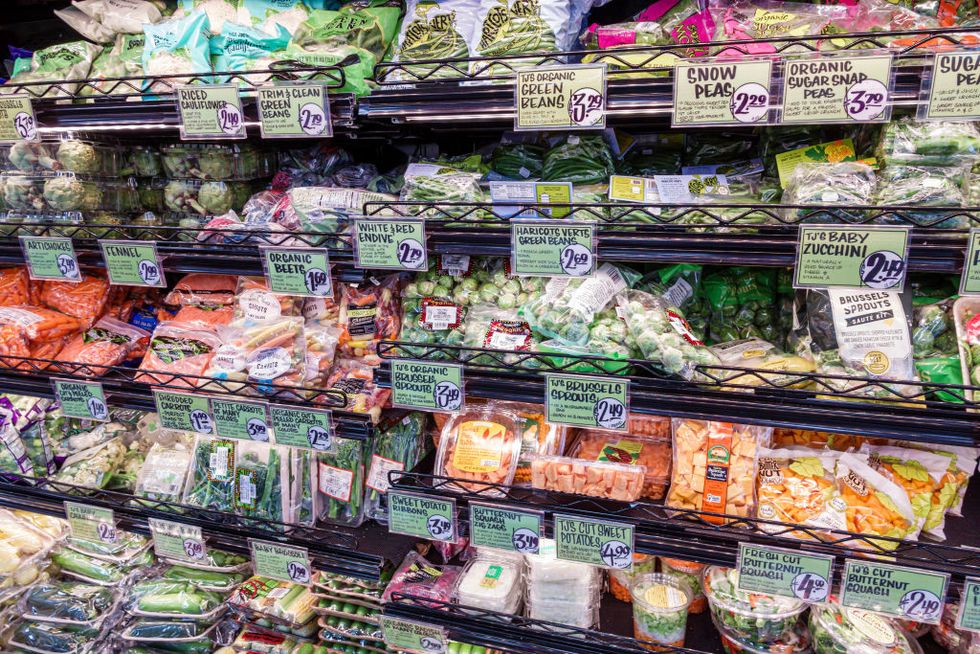WHEN IT COMES to frozen foods, affordable snacks, and a rotating selection of exciting products, Trader Joe’s blows all other grocery stores out of the water.
In a time when kitchen essentials like eggs and milk have skyrocketed in price, Trader Joe’s stores have largely weathered the storm of inflation. Because of their direct relationship with suppliers and curated stock, the chain manages to keep prices low.
This commitment to cost-effective shopping has earned Trader Joe’s the reputation as one of the cheapest grocery stores in America. And while, for the most part, shoppers are able to enjoy the savings without sacrificing quality, there’s a glaring shortcoming in this business model: the produce.
More From Men’s Health

Don’t get us wrong; there are some fruits and veggies that are must-buys on a Trader Joe’s shopping trip. The bananas, for starters, have cost a mere 19 cents a piece for decades. Their beloved bag of teeny tiny avocados is also one of the best products in the entire store.
But Trader Joe’s should not be your go-to destination for all of your produce. We’re breaking down all the reasons why you should get your greens elsewhere.
They Spoil Faster
If you’ve ever stocked up on Trader Joe’s produce only to see it go bad just a few days later, you’re not alone.
“For too long [I] didn’t realize how much faster their items go bad, and how weirdly they go bad,” says Camille Lowder, Delish’s digital food producer and a former Trader Joe’s employee. “Sometimes onions or celery are rotting from the inside out in a creepy way that doesn’t seem to happen at other stores.”
“It’s not well-received for a reason,” adds Mackenzie Filson, a contributing digital food producer at Delish and another former TJ’s employee (we have a lot of them here, we know).
It’s no secret that supermarkets look beyond our borders to find ripe produce—and Trader Joe’s is no exception. “We source product from around the world, wherever we think we can get the very best quality at the time of the year,” said Jack Salamon, the company’s produce category manager, on the podcast Inside Trader Joe’s.
Salomon also revealed on the podcast that the store has a tight network of produce suppliers. The brand remains loyal to these growers, which helps lock in those lower prices. But there’s a catch: the freshness and ripeness of the products can be more inconsistent.
“This is mostly hearsay, but apparently the reason why Trader Joe’s produce is so cheap is because it’s not like an A-grade rating, technically,” Filson says.
To minimize the amount of spoiled food on their shelves, Trader Joe’s restocks their produce daily and donates products that don’t meet their standards—a task Filson and Lowder agree to be one of the worst parts of the job.
“Working ‘spoils’ is both a weirdly zen activity and something disgusting I wouldn’t wish on an enemy,” says Lowder. Even still, that doesn’t necessarily mean the food you bring home is the freshest option available.
On the other hand, larger supermarkets primarily rely on multiple distributors to act as the middleman in their produce aisle. These businesses source from multiple suppliers to make sure the vegetables on display are consistent in quality.
So, when you buy produce at Trader Joe’s, following a strict timeline for consumption is especially important. After being burned by spoiled food too many times, Lowder asks herself: “Will I use this in the next few days? If not, I don’t buy it from TJ’s.”
They Can Be Overpriced
Unlike other grocery stores, Trader Joe’s prices their produce per item. Just like those 19 cent bananas, loose onions, garlic bulbs, and oranges are priced per item, not by weight. In a few select cases, this pricing model can save you money.
“You’ll never end up with a $12 butternut squash,” says Lowder. But for the vast majority of produce, pricing per unit means you’re paying more than you are at other stores.
For example, let’s consider the humble sweet potato. You can buy a single conventional sweet potato for 89 cents at Trader Joe’s. Whole Foods, which has a reputation for being one of the most expensive grocery stores in the country, sells their organic sweet potatoes for $2.39 a pound. It appears that the Trader Joe’s tuber is significantly cheaper at first glance.
But, when you factor in the size of an average sweet potato (roughly 5 ounces), buying one at Whole Foods will run you 75 cents—that’s nearly 16 percent less expensive. Some may argue that a 14-cent difference is inconsequential. But when these apply that to many of the products sold in the Trader Joe’s produce department, it adds up.
They Use Too Much Packaging
Need a jalapeño to make copycat Chipotle burrito bowls at home? At Trader Joe’s, you’ll end up with four more peppers than you needed and a whole lot of plastic. The store stocks their produce department with plenty of pre-bagged salad mixes and conveniently sliced fruit. But this philosophy extends to a large portion of the vegetables in their store.
Trader Joe’s officials have even admitted to using excessive packaging. Salamon shared on Inside Trader Joe’s that the company has actively been working to improve sustainability with how they sell fruits and vegetables. In 2019, they eliminated two and a half million pounds of plastic from the produce section alone.
And yet, many of the products you’re able to buy loose at other grocery stores come in plastic-wrapped packs at Trader Joe’s. Storing food in plastic bags and containers prevents air circulation, which also makes delicate vegetables like salad greens spoil much faster.
That’s not to say you should avoid all of them entirely. “I’ll always sing the praises of their pre-bagged salad mixes (especially the elote one),” says Filson. “Those are great and a good price.”
But for things you can find easily at other stores, avoid the Trader Joe’s version and opt for a plastic-free option.
Where do you buy your produce? Let us know in the comments.
Editorial Assistant
Gabby Romero is Delish’s editorial assistant, where she writes stories about the latest TikTok trends, develops recipes, and answers any and all of your cooking-related questions. She loves eating spicy food, collecting cookbooks, and adding a mountain of Parmesan to any dish she can.





Comments are closed.